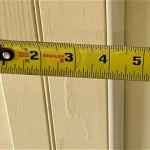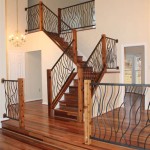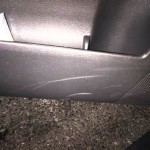Do Interior French Drains Work? Exploring Their Effectiveness
Interior French drains, also known as interior perimeter drains, are a common solution for managing water intrusion in basements. The effectiveness of these drainage systems is often debated, with varying experiences reported by homeowners. This article explores how interior French drains work, their advantages, and potential drawbacks, ultimately providing a comprehensive understanding of their suitability for different basement waterproofing needs.
Water intrusion in basements can stem from a variety of sources. Hydrostatic pressure, the force exerted by groundwater against foundation walls and floors, is a primary culprit. This pressure forces water through cracks, joints, and porous concrete. Surface water runoff, inadequate exterior grading, and malfunctioning gutters can also contribute to water buildup around the foundation, increasing the risk of basement flooding. The severity of water intrusion can range from minor dampness to significant standing water, leading to mold growth, structural damage, and decreased indoor air quality.
The choice between interior and exterior waterproofing solutions depends on several factors, including the nature of the water intrusion problem, the construction of the foundation, and the surrounding landscape. Exterior waterproofing often involves excavating around the foundation to apply a waterproof membrane and install exterior drainage systems. This approach is generally more effective for preventing water from entering the foundation in the first place. However, exterior excavation can be costly and disruptive, especially if landscaping, decks, or other structures are in the way. Interior French drains offer a less invasive and often more affordable alternative, particularly when the water intrusion is not severe or when exterior access is limited.
How Interior French Drains Function
An interior French drain system is typically installed along the perimeter of the basement, at the base of the foundation walls. The system comprises several key components working in concert to collect and redirect water.
First, a trench is excavated around the inside perimeter of the basement floor. This trench is typically narrow, ranging from several inches to a foot in width, and deep enough to reach the footing of the foundation. The trench acts as a channel to intercept water seeping through the walls and floor.
Next, the trench is lined with a layer of gravel. This gravel layer serves as a filter, preventing soil and debris from clogging the drainage system. The gravel also provides a void space for water to accumulate and flow freely towards the discharge point.
A perforated drain pipe is then laid on top of the gravel. The perforations in the pipe allow water to enter the pipe from all directions. The pipe is sloped slightly towards a sump pit, ensuring that water flows downward due to gravity.
The sump pit is a basin installed at the lowest point of the drainage system. It houses a sump pump, which is responsible for pumping the collected water out of the basement and away from the foundation. The sump pump is typically equipped with a float switch that automatically activates the pump when the water level in the pit reaches a certain point. The water is then discharged through a pipe that leads to a designated drainage area, such as a yard, storm sewer, or dry well.
Finally, the trench is backfilled with more gravel and covered with a layer of concrete to restore the basement floor. This creates a relatively seamless and unobtrusive drainage system.
The system works by intercepting water as it seeps through the foundation walls and floor. The water flows into the gravel-filled trench, enters the perforated drain pipe, and is directed to the sump pit. The sump pump then expels the water, preventing it from accumulating in the basement.
Advantages of Interior French Drains
Interior French drains offer several advantages over other basement waterproofing methods. One of the primary advantages is the relatively low cost of installation. Compared to exterior excavation and waterproofing, interior French drains typically require less labor and materials, making them a more budget-friendly option for many homeowners.
Another significant advantage is the minimal disruption to the surrounding landscape. Because the work is performed inside the basement, there is no need to excavate around the foundation, preserving existing landscaping, decks, patios, and other outdoor features. This is particularly beneficial for properties with limited access or mature landscaping.
Interior French drains can be installed relatively quickly, often within a few days, depending on the size of the basement and the complexity of the installation. This minimizes the inconvenience and disruption to the homeowner's daily life.
Furthermore, interior French drains can be effective in reducing hydrostatic pressure under the basement floor. By collecting water from the perimeter, the system helps to alleviate the pressure that can cause cracks and leaks in the floor. This can prevent future water intrusion and protect the structural integrity of the foundation.
The systems are often easily accessible for maintenance and repairs. The sump pit is usually located in an accessible area of the basement, allowing for easy inspection and cleaning of the sump pump. If any issues arise with the drain pipe, it can typically be accessed by removing a small section of the concrete floor.
Potential Drawbacks and Considerations
Despite their advantages, interior French drains are not without potential drawbacks. One of the primary concerns is that they do not prevent water from entering the foundation walls or floor. Instead, they collect the water after it has already entered the basement. This means that the foundation walls are still exposed to moisture, which can potentially lead to long-term damage, such as efflorescence and spalling.
Another potential issue is the reliance on a sump pump. The system's effectiveness is dependent on the sump pump functioning properly. If the sump pump fails, the collected water will back up and potentially flood the basement. It is therefore crucial to have a reliable sump pump and a backup power source, such as a battery backup system or a generator, to ensure that the pump continues to operate during power outages.
Mold growth can also be a concern with interior French drains. While the system helps to remove water from the basement, it does not address the underlying cause of the moisture intrusion. If the basement is not properly ventilated, the collected water can create a humid environment that is conducive to mold growth. It is important to address any sources of moisture and to ensure that the basement is adequately ventilated to prevent mold problems.
The installation of an interior French drain can reduce the usable floor space in the basement, albeit minimally. The trench and concrete cover typically take up a few inches along the perimeter of the basement, which may be a concern for some homeowners, particularly those with small basements.
Finally, an interior French drain may not be the most appropriate solution for all types of water intrusion problems. If the water intrusion is severe or if it originates from a specific point source, such as a leaking pipe, other waterproofing methods may be more effective. In such cases, it may be necessary to address the underlying cause of the water intrusion before installing an interior French drain.
Before installing an interior French drain, it is essential to have a thorough assessment of the water intrusion problem by a qualified waterproofing contractor. The contractor can evaluate the source and severity of the water intrusion, the condition of the foundation, and the surrounding landscape to recommend the most appropriate waterproofing solution. It is also important to consider the long-term costs and benefits of different waterproofing options before making a decision.
In situations where the primary concern is managing water that has already penetrated the foundation, an interior French drain can be a valuable tool. However, it is crucial to understand its limitations and to consider it as part of a comprehensive waterproofing strategy that may include addressing exterior drainage issues, repairing foundation cracks, and improving basement ventilation.

Footing Drain Interior French Pros And Cons Sani Tred

How Does A French Drain Work The Real Seal

How Do Interior French Drains Work Learn More Steel City Waterstoppers Foundation Repair

Is A French Drain The Solution For Wet Crawl Space Seattle Times

Expert French Drain Installation In Ny Nj Pa Vulcan

How Do Interior French Drains Work Learn More Steel City Waterstoppers Foundation Repair

How Does A French Drain Work The Real Seal

French Drains Basements Drain Basement Solutions

Everything You Need To Know About Interior And Exterior French Drains

Water Is An Interior French Drain Necessary Home Improvement Stack Exchange
Related Posts








